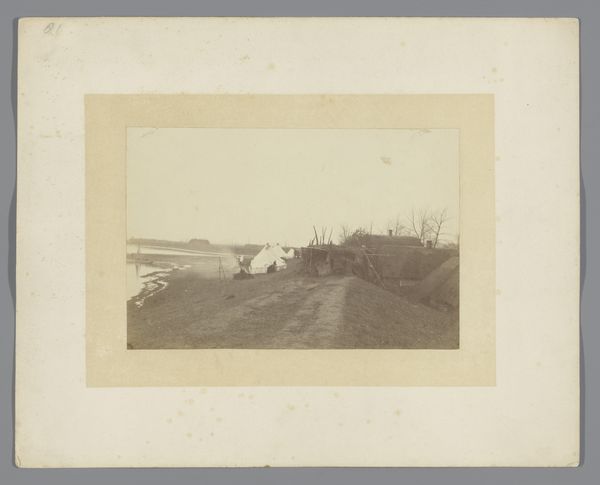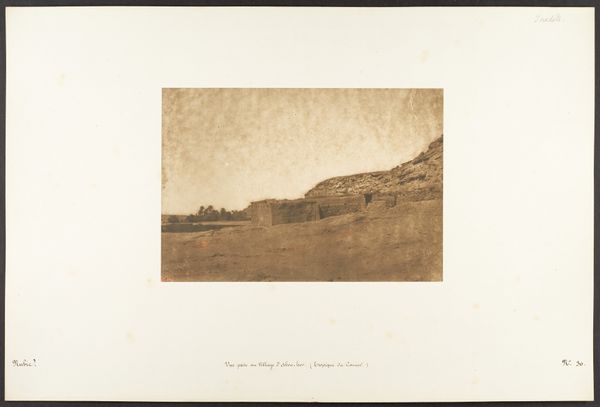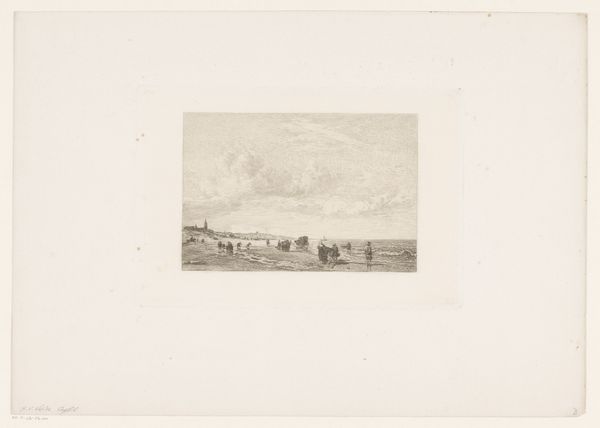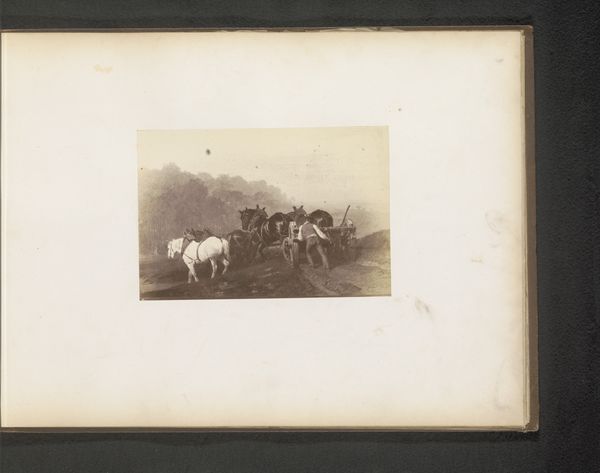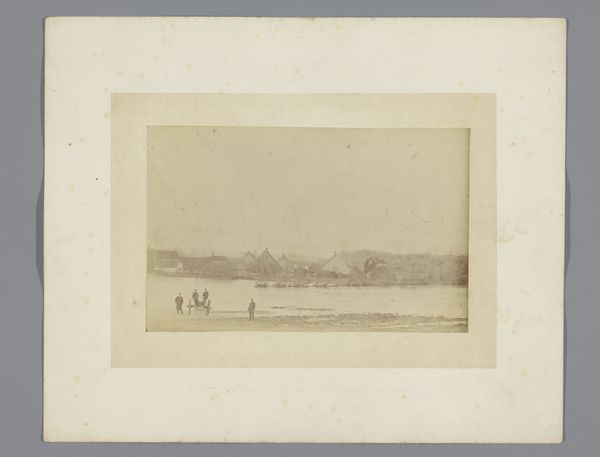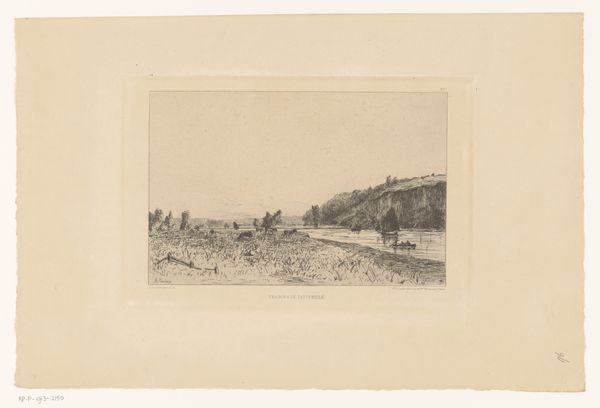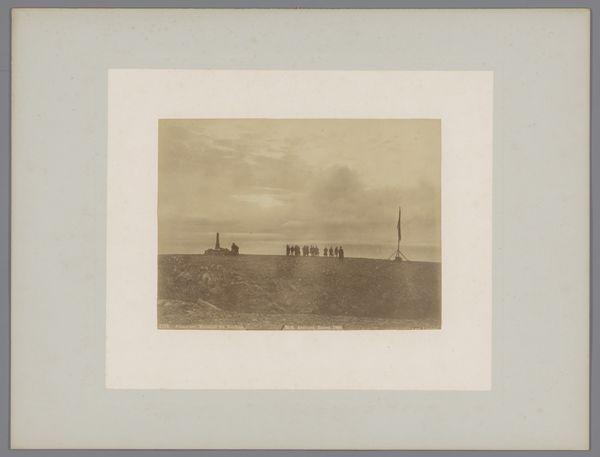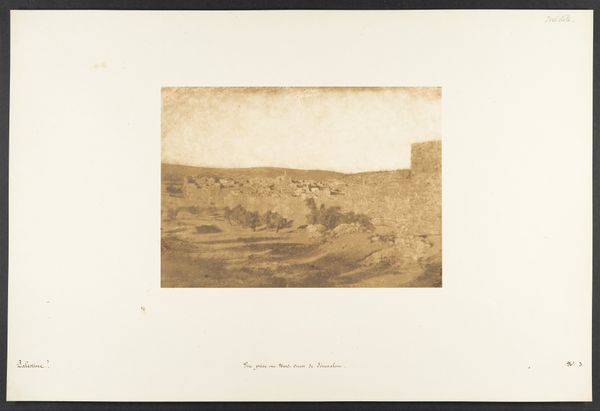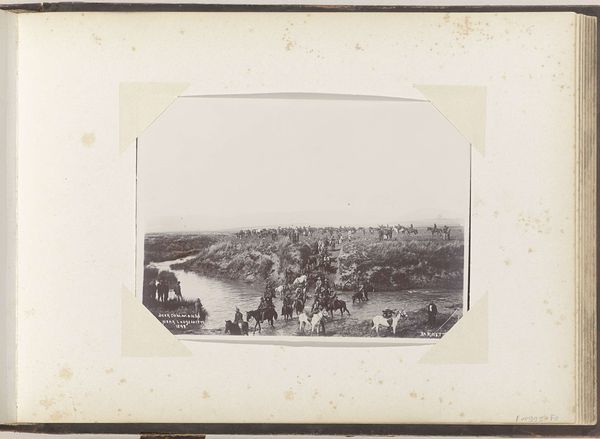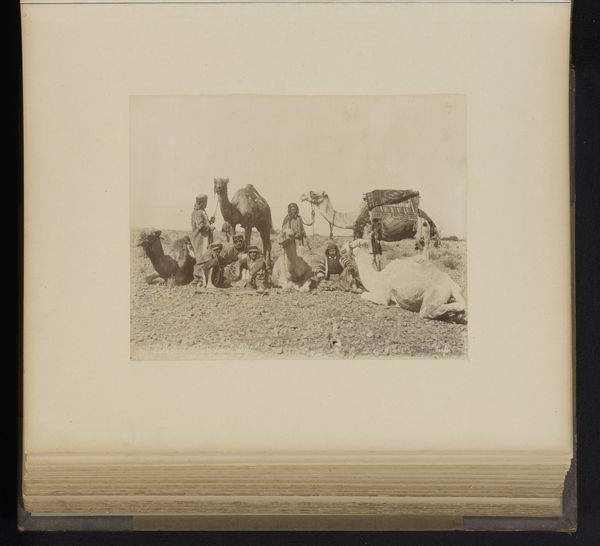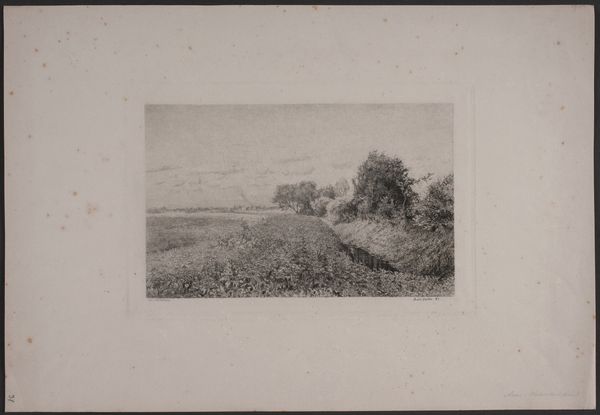
print, photography
# print
#
landscape
#
photography
#
watercolor
#
realism
Dimensions: height 332 mm, width 402 mm
Copyright: Rijks Museum: Open Domain
Editor: This print, “Werklieden bij een bouwplaats,” or “Workers at a Construction Site” by Edouard Boulland, circa 1880-1900, captures a moment frozen in time. The muted tones create a melancholic atmosphere despite the subject being labor. How would you interpret this depiction of the working class through a historical lens? Curator: Considering its historical context, I see this image as a potentially deliberate piece of social commentary. Photography, particularly during this period, was heavily influenced by Realism. Boulland may be engaging with contemporary debates about labor conditions and social inequalities. Is it romanticized or critical? The placement of the workers seems almost incidental to the landscape, suggesting their marginalized position within the broader society. What elements of the scene make you feel that melancholic atmosphere? Editor: It’s partly the faded sepia tones and also the way the figures are somewhat blurred and anonymous. I'm interested in what you said about its potential social commentary – did the art world at that time see it like that? Curator: Perhaps not explicitly in the way we analyze it today. But the emergence of photography as an artistic medium coincided with rising social awareness and the labor movement. Institutions often controlled what was publicly acceptable but Realist artists pushed those boundaries. So it’s about understanding how this photograph would have been viewed through those lenses of both artistic expression and the burgeoning social consciousness. Also how it relates to representations, say in painting, of workers and industry, and who had power in what was represented. Editor: That’s really fascinating. It sheds new light on something I just initially perceived as just…old. I now recognize there may be commentary imbedded there and its artistic depiction really is political. Curator: Exactly. By analyzing images within their social and political contexts, we can reveal their complex layers of meaning and better understand their place in art history.
Comments
No comments
Be the first to comment and join the conversation on the ultimate creative platform.
